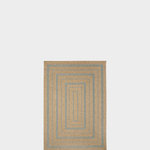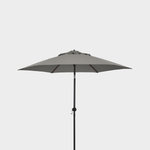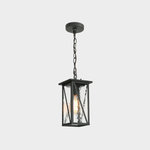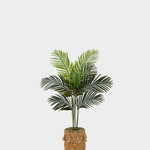Landscape Design
Urban Gardens
See 10 Ways a Trellis Can Boost Your Garden
Use a trellis to increase privacy, divide garden rooms, give vines a place to climb, and more
Before vertical gardens became popular, we used a simpler system to encourage plants to grow up the sides of buildings: the humble garden trellis. With a simple structure of wood or metal, you can cover a vertical surface with vines, make a divider between outdoor rooms, create a focal point or increase privacy. More often than not, it can be the most cost-effective way to add beauty and expand your garden’s potential. Take a look at these 10 design ideas for using garden trellises in inspiring ways.
2. Show off a specimen climber. Create a focal point along the side of the house or a garden shed with a wall-mounted trellis and an eye-catching vine. To really showcase the plant, look for simple trellis designs like those made from mounted wires that visually disappear. Alternatively, go for a trellis with a bold frame and almost unnoticeable interior wires, like the zinc-finish one here. A trellis with this structure acts like a giant outdoor picture frame to show off a dramatic climber like a living work of art.
3. Hide an ugly wall. Trellises can be real problem-solvers in gardens where you have something to screen, like an unattractive wall or the side of an adjacent building. If you can’t drill wires to support a vine to ramble up and cover the problem wall, put a free-standing trellis right in front to support the vines. The eyesore will soon be covered without upsetting your landlord (if you’re renting) or neighbors (if the wall is on their property). In this Los Angeles garden, orange clock vine (Thunbergia gregorii) covers a sturdy iron trellis, screening a wall from an adjacent property.
How to Turn an Ugly Wall Into a Feature
How to Turn an Ugly Wall Into a Feature
4. Boost curb appeal without hurting your siding. Flowering vines can instantly add romance to an exterior and make your home stand out from the street. But well-loved flowering climbers like wisteria and trumpet creeper (Campsis radicans) grown on buildings can harm exterior siding with their vigorous climbing habit. To reduce damage, use a trellis set slightly away from the building to both support the vine’s weight and discourage tendrils from fastening onto the building itself.
Climbing roses and vines like clematis are generally less aggressive and can be grown with wires or a simple trellise on the building. Position trellises to support the direction of growth and the ultimate mature vine shape you’d like to encourage. For example, place trellises above windows or arched over the front door to train vines to frame these areas.
Climbing roses and vines like clematis are generally less aggressive and can be grown with wires or a simple trellise on the building. Position trellises to support the direction of growth and the ultimate mature vine shape you’d like to encourage. For example, place trellises above windows or arched over the front door to train vines to frame these areas.
5. Increase privacy. With the help of trellises and vines, create a leafy screen around areas of the garden you’d prefer to keep private. When choosing your trellis type, keep in mind the degree of desired privacy. Wide-set wire and lattice trellises allow the most visibility, while tighter wooden trellises provide more privacy. Leafy vines increase privacy for all trellis types. Here, trellises bordering two sides of the hot tub form an airy floral screen that will become lusher and create more privacy as the plants fill in.
6. Create dimension in a narrow space. Long, skinny lots and side yards can be tricky spaces to work with. Trellises, with or without vines, provide an opportunity to change the layout of the space, the path one would walk and the way one’s eye falls in a narrow garden.
The designer of this London garden cleverly attached a series of staggered trellises to the side walls to break up the space into smaller areas and screen the edges of the lot from view. By encroaching on the pathway, the side trellises effectively narrow the yard further but simultaneously pull one’s gaze to the nooks they conceal, giving the side yard more dimension.
12 Design Moves to Make Your Narrow Lot Look Wider
The designer of this London garden cleverly attached a series of staggered trellises to the side walls to break up the space into smaller areas and screen the edges of the lot from view. By encroaching on the pathway, the side trellises effectively narrow the yard further but simultaneously pull one’s gaze to the nooks they conceal, giving the side yard more dimension.
12 Design Moves to Make Your Narrow Lot Look Wider
7. Break up an expanse of wall. Even without vines, trellises can add interest and practicality to vertical areas like garden walls or the sides of buildings. Hang an unusual wall trellis — perhaps one with an interesting lattice pattern or handmade ironwork — on a blank wall to add interest or serve a purpose, such as holding often-used garden hand tools. In this Santa Barbara, California, backyard, a metal wall-mounted trellis displays a collection of air plants (Tillandsia spp.) as an unexpected art piece.
8. Make a city terrace feel like a garden. Adding green to an urban space can immediately make it feel more inviting, but to really feel like you’re in a garden, rather than on a rooftop, you may need to get a bit more creative than adding a few potted plants. Trellises and vines are a hardworking duo in city gardens, screening views of adjacent buildings and providing quick coverage with greenery. Mount trellises to walls and the sides of buildings, where possible, and grow vines from large planters beneath. On this London rooftop terrace, wooden trellises planted with rambling star jasmine (Trachelospermum jasminoides) make the seating area feel like a lush, private retreat.
9. Add impact to fences and arbors. Trellises attached to other garden structures, like fences, gates or pergolas, both increase privacy and give the structures more presence in the landscape.
Adding a trellis to an entryway gate, for example, can set a clear boundary between the public street and private home but will still feel inviting, since one can see through the trellis to the garden beyond. Used in the landscape, trellises attached to fences or arbors can act as dividers between garden rooms, partially concealing the area on the other side.
Adding a trellis to an entryway gate, for example, can set a clear boundary between the public street and private home but will still feel inviting, since one can see through the trellis to the garden beyond. Used in the landscape, trellises attached to fences or arbors can act as dividers between garden rooms, partially concealing the area on the other side.
10. Add interest to outbuildings. Garden sheds and other outbuildings often lack architectural details like windows or trim. Trellises offer a way to add interest to an outbuilding’s exterior and tie it in with the surrounding garden.
In this backyard in Princeton, New Jersey, a pair of curved, wall-mounted trellises with purple flowering clematis vine form an attractive accent for the pool house. Due to their graceful shape, the trellises add interest year-round, even when the clematis dies back in winter.
More
12 Tricks to Make the Most of Your Yard
These Ideas for Outdoor Screens Prove Privacy Can Be Beautiful
See more inspiring landscape design ideas
In this backyard in Princeton, New Jersey, a pair of curved, wall-mounted trellises with purple flowering clematis vine form an attractive accent for the pool house. Due to their graceful shape, the trellises add interest year-round, even when the clematis dies back in winter.
More
12 Tricks to Make the Most of Your Yard
These Ideas for Outdoor Screens Prove Privacy Can Be Beautiful
See more inspiring landscape design ideas













The clematis planted in this sunny backyard in Bristol, England, will quickly cover the simple wooden trellises mounted to the existing walls. You may notice that the trellises extend above the walls, giving a few more feet of climbing space and increasing privacy for the homeowners.